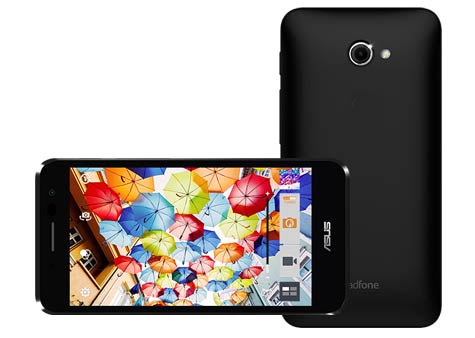Back in the 1990s, we complained vigorously about Microsoft’s dominance and how the company wasn’t responsive to our needs. Now a decade and a half later, Microsoft isn’t as dominant and while it has become more responsive, we are up to our armpits with vendors like Apple and Google that can’t even spell the word. This change came with an even more unattractive massive diversity, not only among vendors, but also among OS versions and hardware form factors. Where we worried mostly about desktops and some laptop computers in the 1990s, now we worry about even more flavors of PCs coupled with tablets and smartphones that don’t have anywhere near the commonality of our once hated and now lovingly remembered (well, after Windows XP, anyway) PCs.
Windows 10 provides at least the opportunity to again select one platform even though we are never going to put the massive diversity of hardware back into the bottle. But instead, shouldn’t we rethink the platform choices we have?
I think so. Let me explain.
Windows 10’s Difference
This will be the first platform from a major vendor designed from the ground up to scale from smartphones to high-performance workstations. Stop and think about that for a moment. While we have seen smartphone technology vendors like NVIDIA showcase that they could scale an experience up to huge TVs, there has been relatively little work, outside of doing presentations, to turn that experience toward productivity. Yet the potential increasingly exists to do exactly that.
At the recent forward-looking ARM roadmap meeting, executives were adamant that their platform could approach full-powered PC performance. There are now a number of efforts to bring ARM to work effectively in servers. With most Windows viruses and malware designed to operate on x86 platforms and the increased ability to host x86 applications either on top of virtualization platforms on the device or in the cloud, a scalable solution like Dell’s Cloud Connect HDMI stick could become the basis for something very different and new if it instead ran Windows.
Intel Compute Stick
Intel has a similar product in market called the Intel Compute Stick and it has twice the system memory and four times the storage for about $30 less than the Dell solution. (I’m trying to wrap my head around this, because I’ve never actually seen a better configured, viable Intel solution that carries a price better than a comparable ARM-based offering). Currently, it runs Windows 8.1, but all Windows 8.1 products will run Windows 10 according to Microsoft. Windows 10 is leaner—meaning it should run better on the Intel Compute Stick than Windows 8.1 currently does.
The 32GB storage limit of the stick coupled with a document security system like Varonis and tied to accessories that would allow the solution to work with various sizes of battery-powered screens could, when used with Windows 10, both dramatically reduce the inconsistency in the platform and the effective inconsistency in the hardware. Basically, everyone would get an Intel Compute Stick and then they’d be allowed to buy or requisition the accessories they needed create the user experience that best fit them. IT would see only the stick and Windows 10—both of which would remain consistent across the company.
You could even add phone capability by more aggressively using a VOIP solution like Microsoft’s Skype, though coming up with a phone hardware solution would require Apple-like design creativity just so the result didn’t look like crap.
The Flexible Phone
Intel and Asus released a product called the PadFone Phone X Mini, which was a phone that could be added to a tablet as an accessory. I think this concept has more merit, because it addresses the phone component more aggressively. This solution is by no means enterprise ready, but were you to express interest in the concept, a vendor like Lenovo, which has both the enterprise chops and smartphone capability, might build something that could massively simplify your life.
The interesting issue here is that ARM is the technology that is most common on phones, and this is where Windows runs on these devices as well. So a phone-based solution could be based on ARM—not Intel—unless Intel can get Microsoft to do what Google Android did and embrace x86 for phones.
Wrapping Up: Hardware Revolution
I think we are getting close to a hardware revolution and that Windows 10 could be the key to starting it. The complexity of platforms and hardware configurations has grown to near unmanageable proportions, and it is long past time that the technology vendors crafted a solution that could simplify our lives. Windows 10 has the potential to be that platform, but we are still waiting for the hardware vendors to step up to that opportunity. The last time Microsoft got frustrated that hardware wasn’t keeping up with software, it created the Surface Tablet, which is arguably the best Windows business tablet on the market.
Makes you wonder what Microsoft may have cooking and on which technology platform it will run, because, as you may also recall, the most affordable Surface Tablet was NVIDIA ARM based. Windows 10 may start a hardware revolution. It makes you wonder who will still be standing when the revolution is over.
Rob Enderle is President and Principal Analyst of the Enderle Group, a forward-looking emerging technology advisory firm. With over 30 years’ experience in emerging technologies, he has provided regional and global companies with guidance in how to better target customer needs; create new business opportunities; anticipate technology changes; select vendors and products; and present their products in the best possible light. Rob covers the technology industry broadly. Before founding the Enderle Group, Rob was the Senior Research Fellow for Forrester Research and the Giga Information Group, and held senior positions at IBM and ROLM. Follow Rob on Twitter @enderle, on Facebook and on Google+




